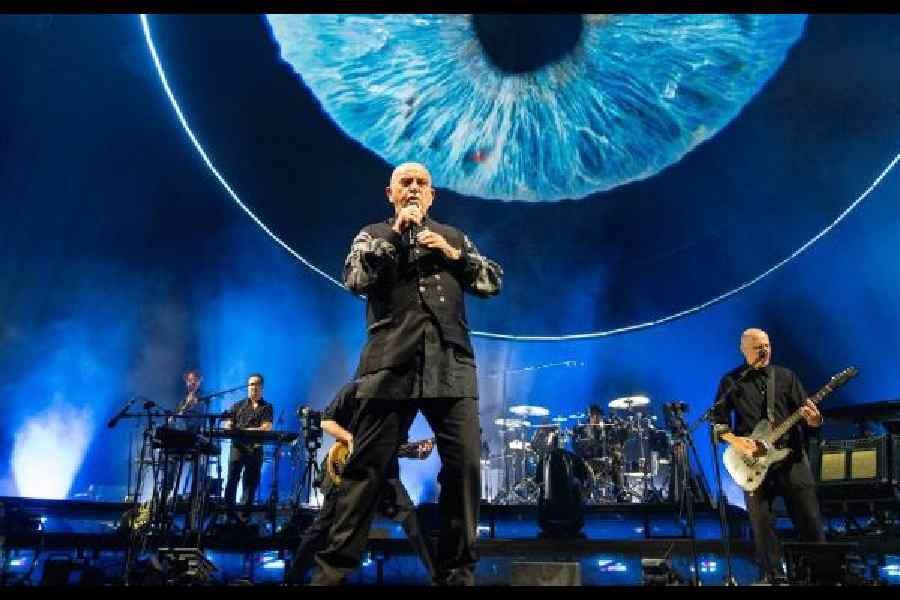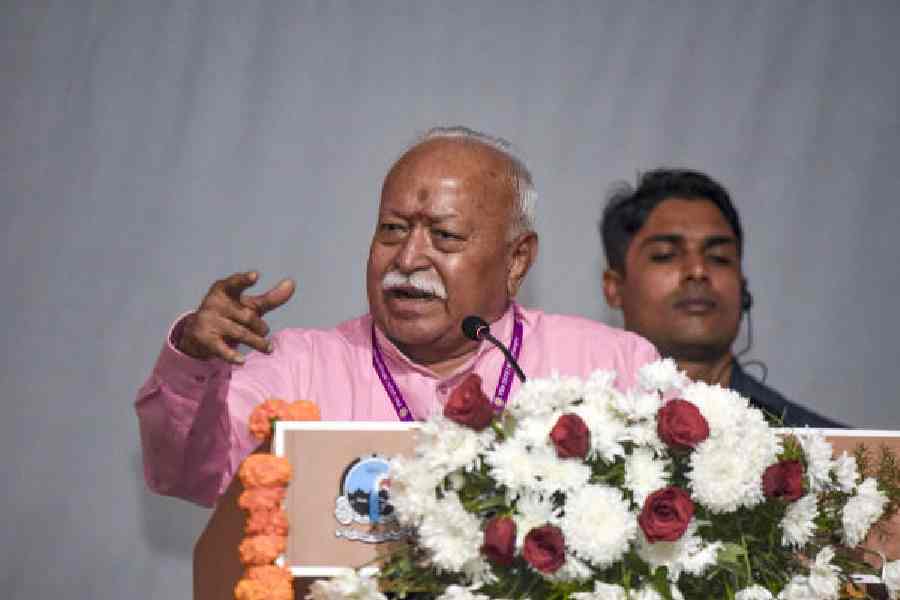If I was a butterfly, 21 years would be an eternity,” Peter Gabriel observed in a video interview last week. “And if I was a mountain, it would be a little flash. So it’s all relative.”
It has been 21 years since Gabriel, the thoughtful, perpetually forward-looking English songwriter, has released an album of new songs. Friday concluded his careful rollout of I/O, a dozen tracks that face time and mortality while they celebrate regeneration and reconciliation. On the album, which he has released song by song over the past year, Gabriel contemplates a future of limitless information, while he cherishes the very human qualities of love, belonging and compassion. It’s a statement from a songwriter who, unlike some rock musicians, not only accepts but welcomes the lessons of age.
“There are a few good things about getting old,” he said. “Knowing yourself better and learning to say no. And learning to be more of who you are.”
Gabriel, 73, describes himself as a perfectionist. Making the album was, he agreed, quite a protracted process. “At this time in my life, I also wanted to do a bit of living rather than just be a professional musician,” he said. “I kept making music, but I didn’t get to finishing stuff.”
“I’m a tinkerer,” he added. “So there’s always a diversion. I’ve never had trouble — touch wood — with musical ideas. But getting to a point where I think there’s a lyric that I’m happy with — that has been harder for me. I think the critic in me is tougher now than it used to be, for better or for worse. But part of the creative process is to feel good about lowering your standards sometimes and just, you know, letting the energy rip.”
Microcosms and macrocosms
In current pop, Gabriel is a happy anomaly. He writes elaborate, seven-minute songs in an era of TikTok snippets and two-minute hits. Although he released I/O month by month, he respects the album as a form. “The experience of being taken on a ride is something I love and I would love to give other people,” he said. “Any time the tide goes one way, you know, there’s a riptide going the other. So the more things shorten, I think the more attractive, slower and longer things will be.”
Gabriel spoke from his home studio in London, where a painting by Antony Micallef, with bold brushstrokes and semiabstract yet biomorphic forms, hung on the wall behind him; a vocal microphone was perched nearby.
I/O — for ‘Input/Output’ — is Gabriel’s latest two-letter album title — after So (1986), Us (1992) and Up (2002). In the new songs, he applies that concept to microcosms and macrocosms: to physical sensations, data, life cycles and ecospheres. “Stuff coming out, stuff going in/I’m just a part of everything,” he sings in the album’s title song, a surging affirmation of what he said in the interview he calls interconnectedness, of “seeing that we aren’t just these little isolated islands, but we belong to this greater mesh of life.”
As far back as his days with Genesis, the pioneering progressive-rock band he led in the 1970s before going solo, Gabriel has written about what-if scenarios. And he has been fascinated by the interaction, and tension, between humanity and technology. “They’re all beginning to overlap,” Gabriel said. “Computer tech was where the excitement was for my generation, in the creation of the internet. For my kids, I think it’s more a biotech world that is integrating nature and technology, both within and without our bodies.”
He has, of course, been thinking about artificial intelligence. “My job, your job, everyone’s jobs are going to be really well done by AI,” he said. “And so then what? There’s a designer called Gaetano Pesce, and he had this saying, which is ‘Beauty in the future will lie in the imperfection.’ So to try and get a sense of who we are, where our humanity is and what we want to be, is very important. We’ve got this very awkward adolescence as a sort of human-tech hybrid, which is going to be painful and difficult. But I do believe that if we survive it, that an age of abundance is a real thing.”
‘It’s never right and wrong’
Since January, Gabriel has been releasing a new song from I/O each month on the date of the full moon, honouring a natural cycle. He has paired each song with an image by a contemporary artist. A painting by Micallef — who captures “both the horror and hopefulness of humanity,” Gabriel said — was turned into the animated video for Love Can Heal, a rippling, glimmering electronic promise of absolution sung in Gabriel’s gentlest tones.
When Gabriel announced the album’s full-moon schedule in November 2022, its music was still a work in progress. The songs had accreted parts over decades, with material from Gabriel’s longtime band; from the polymorphous musician Brian Eno; from Swedish and South African choirs; from orchestral arrangements; and from Gabriel’s library of samples and sessions.
The finished album deliberately offers alternatives. Each song arrived in two distinct versions, a Bright-Side mix by Mark Spike Stent and a Dark-Side mix by Tchad Blake. Stent’s mixes are glossier and more three-dimensional; Blake’s offer close-up physical grain and intimacy. (A third version of the album, with spatial-audio In-Side mixes by Hans-Martin Buff, is available for the Dolby Atmos system.)
“It’s never right and wrong — it’s a choice, isn’t it?,” Stent said from his studio near Salisbury, England. “I think it’s quite interesting what Peter has done here — to let the listener decide. We all interpret music in different ways. “
Gabriel has hardly been idle since 2002. He mounted multiple arena tours, including one he shared in 2016 with Sting, echoing their tours for Amnesty International in the 1980s and early 1990s. He wrote songs for movie soundtracks, including the Grammy-winning Down to Earth for WALL-E. He traded cover versions with some of his favourite songwriters on a pair of albums, Scratch My Back (2010) and And I’ll Scratch Yours (2013). He performed and rerecorded his older songs with orchestral arrangements as New Blood (2011) and toured with an orchestra led by John Metcalfe, who also provided arrangements on I/O.
Lately, Gabriel has been consulting with scientists about brain-imaging technology that promises to read thoughts. “It’s in its infancy, but it’s here,” he said. “The speed to go from a thought to an external object, and to then translate that to 3D printers or to films or to music, is going to be seconds — not 30 years of study. I love this idea that the arts would just be languages that everyone can speak in the future.”
All of those projects are reflected in the songs on I/O, which has been gestating since the early 2000s. In a 2005 interview with Rolling Stone, Gabriel gave the album’s title and said, “I’m trying to write principally about birth and death, with the sex in the middle.”
But over the years, as the album evolved, thoughts about time and the mind also moved into the foreground. The album’s most jubilant moments arrive in songs that Gabriel expects to be part of what he calls The Brain Project, a show with a what-if narrative about the workings of the brain. Road to Joy, a clear successor to Gabriel’s funky 1986 hit Sledgehammer, revels in the sensations that flood someone emerging from a coma. Olive Tree envisions a helmet that lets someone feel what other life-forms — like a growing seed — experience from within; trumpets blare with the exhilaration.
Gabriel doesn’t expect to have another two-decade gap between albums. His “brain project” is taking shape, and “there’s a lot of stuff in the can,” he said. “They’re not finished, of course. But I don’t think it will be 21 years before the next one.”
(The New York Times News Service)










